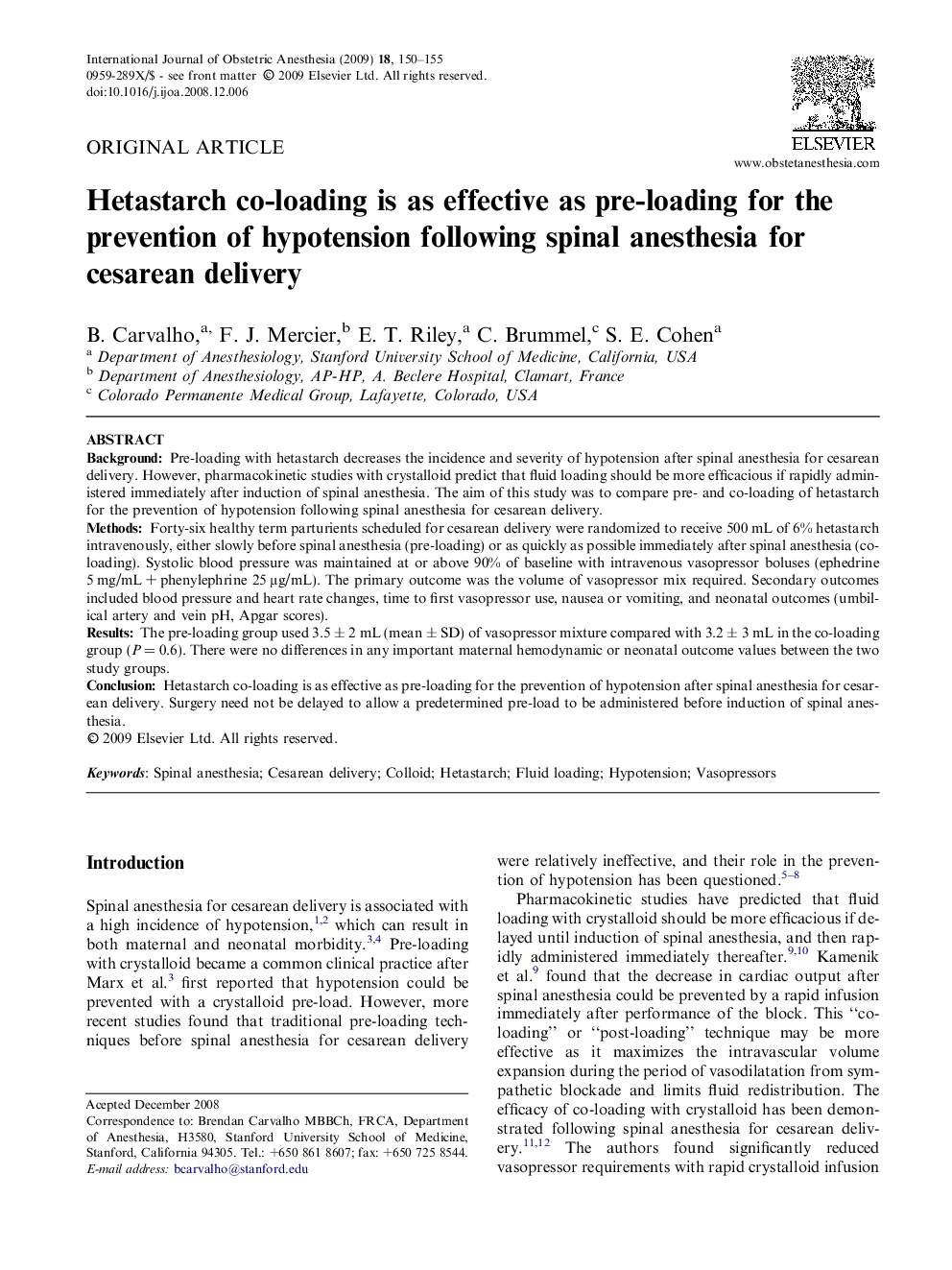| Article ID | Journal | Published Year | Pages | File Type |
|---|---|---|---|---|
| 2758527 | International Journal of Obstetric Anesthesia | 2009 | 6 Pages |
BackgroundPre-loading with hetastarch decreases the incidence and severity of hypotension after spinal anesthesia for cesarean delivery. However, pharmacokinetic studies with crystalloid predict that fluid loading should be more efficacious if rapidly administered immediately after induction of spinal anesthesia. The aim of this study was to compare pre- and co-loading of hetastarch for the prevention of hypotension following spinal anesthesia for cesarean delivery.MethodsForty-six healthy term parturients scheduled for cesarean delivery were randomized to receive 500 mL of 6% hetastarch intravenously, either slowly before spinal anesthesia (pre-loading) or as quickly as possible immediately after spinal anesthesia (co-loading). Systolic blood pressure was maintained at or above 90% of baseline with intravenous vasopressor boluses (ephedrine 5 mg/mL + phenylephrine 25 μg/mL). The primary outcome was the volume of vasopressor mix required. Secondary outcomes included blood pressure and heart rate changes, time to first vasopressor use, nausea or vomiting, and neonatal outcomes (umbilical artery and vein pH, Apgar scores).ResultsThe pre-loading group used 3.5 ± 2 mL (mean ± SD) of vasopressor mixture compared with 3.2 ± 3 mL in the co-loading group (P = 0.6). There were no differences in any important maternal hemodynamic or neonatal outcome values between the two study groups.ConclusionHetastarch co-loading is as effective as pre-loading for the prevention of hypotension after spinal anesthesia for cesarean delivery. Surgery need not be delayed to allow a predetermined pre-load to be administered before induction of spinal anesthesia.
